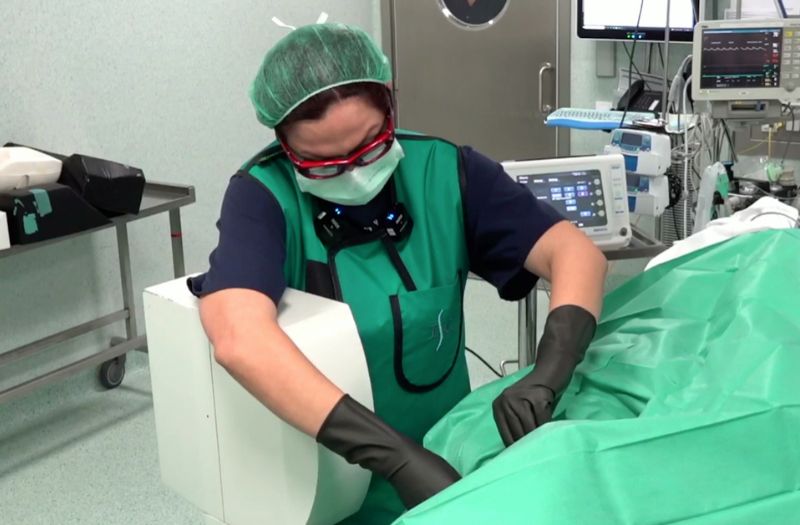When the vertebral canal through which the nerve roots pass in the cervical spine becomes too narrow, it is called cervical spinal stenosis. This narrowing can cause pain or numbness and other symptoms. We will explain all about this condition in this article.
Instituto Clavel has previously offered information about lumbar spinal stenosis, but this time we want to focus on stenosis affecting the cervical area. As we indicated at the beginning, this spinal pathology occurs when the vertebral canal, through which the nerves run, narrows. As a result, the nerve roots and spinal cord can be compressed, resulting in pain and other associated symptoms that we will describe later.
What causes the narrowing to occur? The main cause of cervical stenosis is degeneration of the spine, so it mainly affects people over the age of 50. Over the years, the spine wears out, leading to an overgrowth of bone and tissue around the vertebrae, especially between C4-C7, which are the ones that bear the most weight.
Symptoms of cervical stenosis
Cervical spine stenosis may not have any symptoms in its early stages. However, as the narrowing of the spinal canal increases and the nerves become compressed, the patient will probably suffer neck pain and stiffness.
As the pathology worsens, there can be other, more serious, symptoms that impair the patient’s quality of life:
- Numbness and tingling in the arms and hands.
- Weakness or loss of strength in the arms and hands, making it difficult to perform ordinary activities such as holding something heavy or opening a container.
- Dizziness, loss of balance, and difficulty walking. This can lead to falling, so it is a serious problem for the patient.
- In more severe cases in which there is spinal cord compression, we can see cervical myelopathy, which is characterized by progressive loss of strength in the arms and legs and loss of sphincter control.
When you have these symptoms, it is essential to go to a specialist in neurosurgery who will able to evaluate your symptoms by performing a physical examination, accompanied by an imaging test to confirm the diagnosis.
At Instituto Clavel, in addition to the experience of our entire team, we have EOSedge technology, which provides us with a high quality image of the spine of the patient in standing position, with a very low level of radiation. In addition to being useful for planning a probable surgery, this helps us study the complete spine to see if there is a problem of sagittal imbalance, as there can be when there are problems at the cervical level.
Treatment for cervical stenosis
Once the diagnosis has been confirmed, the specialist will determine the most appropriate treatment, which will depend on the severity of the condition. In mild cases, it is usual to start with a conservative treatment in which medication to relieve the pain is combined with a physical therapy program focused on the specific area.
At Instituto Clavel we have a team of physiotherapists specialized in the spine who can help you with manual and active therapy to strengthen the spine and increase flexibility in the cervical area.
In addition, they will also help you improve your posture habits, introducing changes in your day-to-day behavior that will improve the symptoms and also be useful for preventing other spinal pathologies.
If these treatments are not effective, our medical team will evaluate other options such as cervical rhizolysis, which is a minimally invasive procedure that can relieve pain from about 4 months to up to a year and a half.

If this proves not to be effective either, or if there are more serious symptoms right from the first diagnosis, the neurosurgeon will assess the possibility of using surgery to decompress and relieve pressure.
Cervical laminectomy is one of the most common surgeries in cases of stenosis. It consists of removing the back part of the vertebra, called the lamina, the yellow ligament, and the osteophytes on the facets to release the nerve roots. However, the type of surgery chosen will vary according to the patient's condition and the area where the canal stenosis is located.
If you need more information about cervical canal stenosis or have questions about your personal case, please do not hesitate to contact us. We will be happy to help you.
Categories: Spine treatments, Spine pathologies, Cervical pain
